David Craig: Our economic system is completely dependent on nature
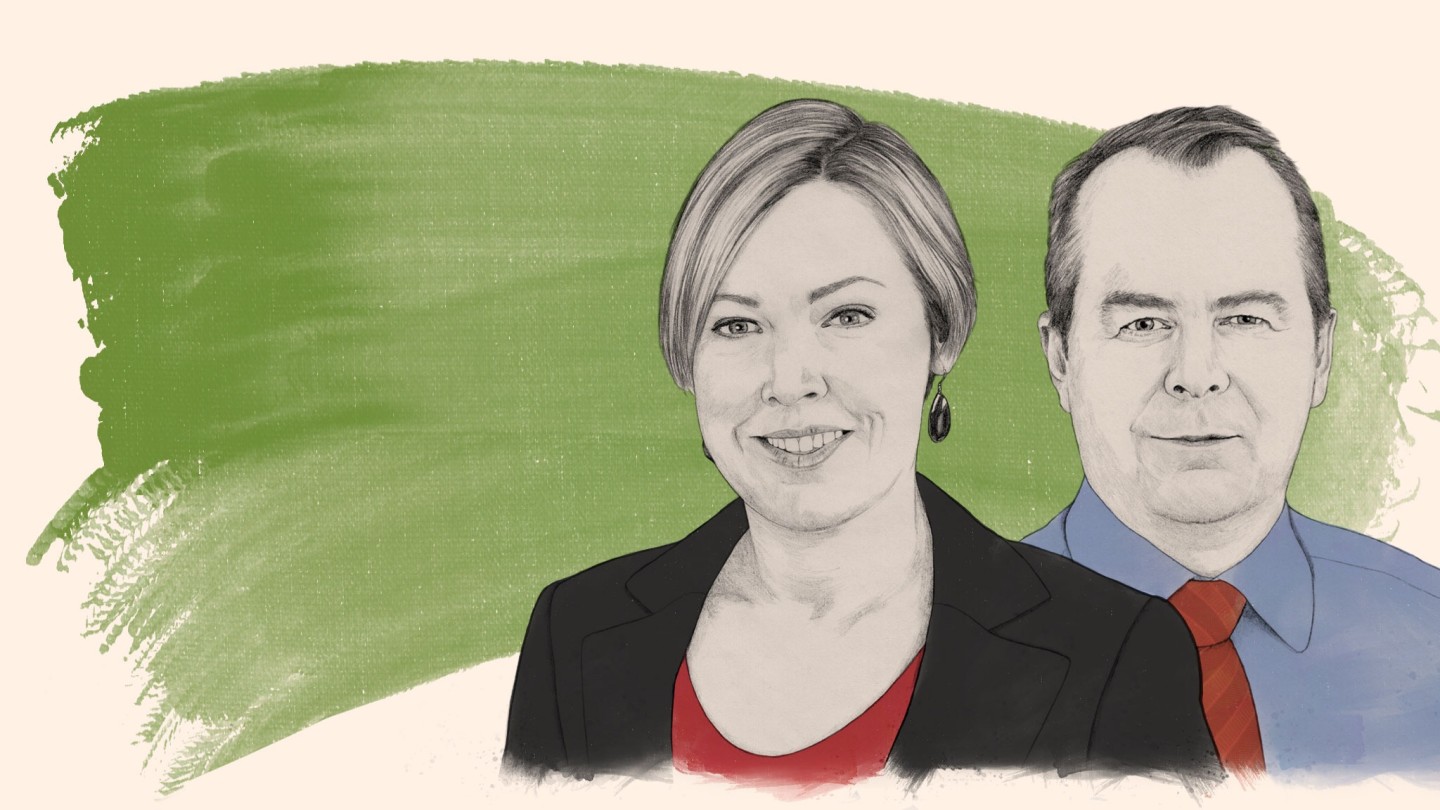
Simply sign up to the Sustainability myFT Digest -- delivered directly to your inbox.
David Craig first became known to investors for running Refinitiv, the big data company, for 15 years — a business that plays a central role in the City of London and financial markets globally.
But, a couple of years ago, he left to take up the role of co-chair of the Taskforce on Nature-related Financial Disclosures. His aim in doing so has been to bring the natural and financial worlds together, working with his co-chair, Elizabeth Mrema.
Under their leadership, the TNFD has been developing nature-based corporate reporting systems, to track water usage and environmental impacts as closely as carbon emissions, and it has gained backing from companies including Nestlé, Tata Steel, HSBC, Kirin and BlackRock.
Here, Craig talks to Gillian Tett — chair of the FT’s editorial board, and editor-at- large, US — about the progress made to date and the work still to do.
Gillian Tett: David, what is this rather ugly acronym: TNFD? What do you actually do? And why did you — as someone who’s been in the mainstream financial world for so long — decide to get involved?
David Craig: We’re a market-led taskforce. We have nearly 950 members around the world — including financial institutions, corporates, nature companies and others — and we’re creating a global framework where you can assess, identify, manage and disclose nature-related risks.
Climate Exchange
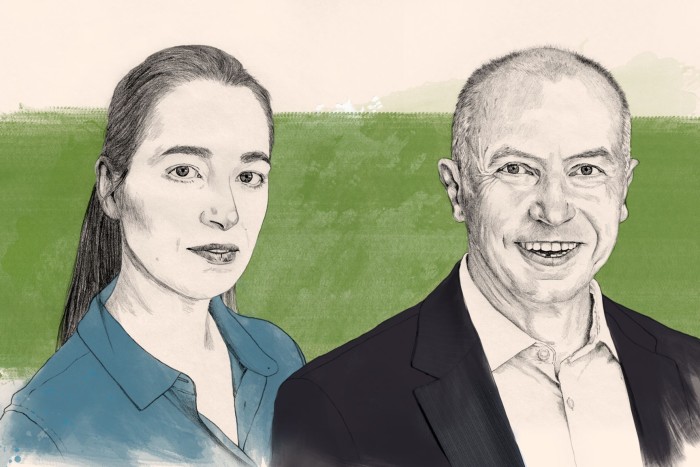
Following the success of our monthly Economists Exchange and Tech Exchange dialogues, the FT has launched Climate Exchange: conversations between FT reporters and the business leaders, innovators and top academics in the fields of sustainability, energy and the environment. The dialogues are in-depth and detailed, focusing on the challenges of tackling climate and changing our energy mix.
Now, why is that important? Why do we need to do that? We need to do that because our economic system is completely dependent on nature. And we are removing and reducing the amount of fertile land and of water. We’re reducing pollination capabilities. All of these things that we’re doing to the natural system are not just damaging the planet — which is bad — but actually damaging the prospects for companies and investors. We have these externality risks, and we have to bring those in and manage them.
At TNFD, our goal is very simple. We’re trying to redirect financial investment into nature-positive outcomes, so that we make sure that we manage these risks and create more opportunity in how we work with nature.
Why did I want to volunteer for this role? Well, I’ve always been passionate about the natural system, but I’ve also been very passionate about financial services. And I believe that, when they’re directed in the right way, they can do enormous good: drive economies, provide jobs, mortgages, loans, investments. But what I saw, having worked with environmental, social and governance data for many, many years, was that financial systems are only good when they manage risk, and identify and value risk, properly. They basically assume that the natural system is free. It costs nothing to destroy a forest. It costs nothing to use as much water as you want, or to pollute. And therein lies the problem.
So we’ve got to, in effect, change the valuation, pricing and risk approach within financial markets to make sure that we put a value on the natural system. And we have to do that recognising that climate and nature are two sides of the same coin. You can’t separate the two; they’re totally integrated in the view of the planet. We might have separated how we think about them. But we’re trying to integrate them.
That’s why I was really passionate about doing this because I really think we can make some change in how financial markets work for the good of the natural system.
GT: I must say I find it fascinating that someone like you has jumped across because you’ve been involved in very hard data at the centre of the capitalist machine for many, many years. It used to be the case that people who were talking about nature were more on the hippie, activist side of the world. So it’s a very interesting sign of the times that you’re now involved in this. But I’m curious. In the last few years, we’ve seen a lot of focus on carbon emissions: the Taskforce on Climate-related Financial Disclosures (TCFD) came out some time ago, and the thing about carbon is that it’s pretty tangible what you’re measuring; it’s just one thing. How on earth do you try to measure something as soft, intangible and complex as nature?
DC: Well, it’s certainly complex. And you’re right that CO₂ or greenhouse gas emissions are identifiable and measurable. You can have a singular goal like [limiting the Celsius increase above pre-industrial temperatures to] 1.5 degrees. Now, welcome to the world of nature, which is far more complex and interrelated. What we’re doing with the taskforce and our members — amazing companies and investors around the world who’ve really been focusing on this — is trying to break down that complexity.
So, how do I break down the complexity of the natural system, and guide companies and investors to think about and reduce the problem? Here’s one example. Very early on, we published a standard definition of what we call the biomes and the realms of nature and how they interface with business. What does that mean? Well, there are four realms: ocean freshwater, atmosphere, and earth. Then you break that down into 34 biomes, which are areas of land or water with distinct ecosystem services and attributes that you have to be aware of. So what we’ve effectively done is say that the planet is a big place but, if you really break it down, you can separate it into these scientifically recognised biomes.
If I’m sourcing materials from one of those biomes, or [basing] my factories or output [there], or investing in one of those areas, I then have a very good understanding of whether, in that type of ecosystem, I need to be more careful about water — or pollutants, or land uses.
It’s breaking down the problem so you can really understand it and grapple with that complexity. We’ve got to stop complexity being an excuse for not doing this because financial markets are very complex, and they deal with incredible things and make them very manageable. So I think the challenge here is not to see complexity as a problem, but actually to embrace that complexity and really make this work for the market.
GT: The reality is, though, if you look at the financial system and the discussion around green issues, you’ve had this incredible attention on the carbon issue. It’s partly due to factors like Greta Thunberg, and stuff like that. You’ve had the climate conferences — COP25, 6, 7, 8 — they grab a lot of attention. Yet when the UN had its own meeting at the end of last year on the environment and on biodiversity issues, it got almost no attention at all. Does that frustrate you? Do you think that means a lot of the green debate has been going in the wrong direction?
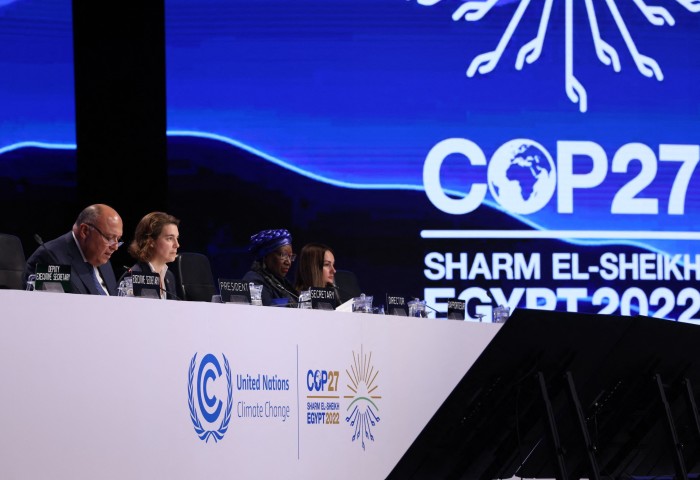
DC: Well, if we all had the power of wonderful hindsight, we probably wouldn’t have started with carbon and climate. We’d have started with the whole natural system, and looked at climate and nature together, as part of that. But here we are. We started with climate because we recognised the emergency and the challenge that was happening.
I’d say, though, that, since I’ve been on this task force in the last few years, the amount of attention and awareness has just exploded. You mentioned the UN COP15 conference in Montreal. Thousands of business representatives from finance were there — it was the first time ever that they were there. Over 400 companies and financial institutions signed the “Make It Mandatory” declaration, on mandatory disclosures on nature.
I’ve only been working in this field for a couple of years but everyone who told me they’d spent 20 years in this field said this was a complete change. You’ve got financial investors and heads of banking talking about soil carbon capabilities. I was at [the World Economic Forum in] Davos earlier this year, and I was going to panels with bankers talking about soil and its carbon retention capabilities! Normally, we talk about bitcoin and blockchain. Finally, we’re talking about something real and substantive like soil carbon.
I think the other breakthrough was that we started to listen to scientists, which is really good after many years of ignoring them. If you read the IPCC report from last year, they said something very interesting which didn’t get a huge amount of attention but is now getting attention: when you look at the total greenhouse gas reduction capability of the planet, over 34 per cent of that total reduction would come from land use, agriculture, food production, farming and forestry — more than industry, more than energy, 13 times more than electrifying the entire world’s transportation system.
And the scientists have basically said: “Look, we’re staring right at this. We’ve got to start preserving forests. We’ve got to rethink how we do farming and agriculture. We’ve got to start harnessing nature as an asset to fight climate change.”
If you look at the big debate around [carbon] offsets, you find 90 per cent of them are nature based. So the penny is really dropping with anyone focused on climate: they’re finding it impossible to not look at nature.
When I started this project, people would say to me: “It’s fantastic what you’re doing, David, but we’ll solve climate first and then we’ll get around to nature.” Now, that’s completely changed. They’re realising they can’t get to net zero without actually using nature-based solutions and nature systems for the natural planet. We’ve started to finally listen to scientists about what’s really happening.
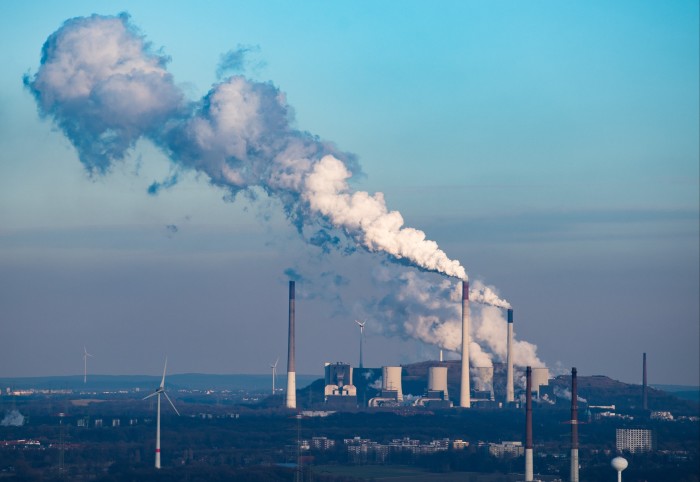
GT: A banker said to me the other day: “I’ve never known my colleagues to be so interested not just in soil but in worms” — which was quite a change! And I’m very struck by the fact that one of the other hard-headed, ultra-capitalist bankers I know who’s also moved across to this area is Hank Paulson, the former US Treasury secretary — a man who used to run Goldman Sachs. He is absolutely red-hot on championing this focus on biodiversity. His group has issued a number of very punchy papers, trying to do things like put a price on bumblebees or worms or things like that.
And the point he often makes, as a [US] Republican, is that the beauty of talking about the environment — instead of just about climate and carbon — is you get a much bigger bipartisan audience. People often forget that it was actually under Richard Nixon, it was Republicans who forced a lot of the campaigns around the environment and the protection of national parks — or the creation of national parks — in America. The creation of the Environmental Protection Agency came under a Republican government because a lot of Republicans care about the land and the idea of being a steward of environmental heritage.
Do you have any hope that talking more about nature, rather than about Greta Thunberg and climate, might be a way to get a more inclusive group into climate change discussions?
DC: I think you’re absolutely right. As you said earlier, greenhouse gas emissions are more measurable, but they’re less tangible. When nature is destroyed, you tend to see it much more quickly. When the forests are cut down. Or when they’re burning — you see the fires from space. You don’t see the CO₂. But you do see the pollutants, you see what’s happening in our waterways. So it’s much more tangible. It has much broader appeal, sometimes, than the climate debate.
And the other thing that we found, particularly through the pilots that we’re running — we have around 200 pilots, from Brazil to palm oil to mineral extraction — is that nature risk, from a financial perspective, is far more direct and it’s far more immediate. What do I mean by that? If you invest in a coal-fired power station, you emit CO₂ that collects in the atmosphere and it contributes to the overall impact. But if you invest in farmland and you use too much fertiliser and you destroy the fertility, or you cut down the surrounding woodlands and create floods, that impact is more direct and it’s more immediate. So you actually get people thinking about stewardship much, much more quickly than you do climate — which is why I often wish we’d done nature and incorporated climate within that, rather than doing climate [first] and now looking at the bigger picture of nature.
I think climate [campaigners] looked at goals first and setting targets, and then thought about the effect on people. But what we’ve done with TNFD [is say] you can’t assess nature risk and impacts without looking at local communities. Ninety per cent of farms are below a hectare in size. The best stewards of land and nature are actually local people. So you have to incorporate local communities and societies right from the outset and not think about it as something later . . . You get a far larger stakeholder group when it’s engaged and passionate.
You’re absolutely right about the left and right polarisation and the national parks because conservatism is about preservation as much as economic growth — and, if we don’t preserve these things, then we won’t have economic growth, either. I think the penny is dropping in economies around the world that these two things go side by side. You don’t have economic growth unless we have a productive natural system.
GT: The same is true in the UK: you hear [different] views about nature across the political spectrum. If David Attenborough had been the cheerleader for the movement, not Greta Thunberg, I think it would be much easier to have an inclusive tone. But, given that you have the advantage of coming in with a TNFD after the TCFD was created, what else have you learned about how to go about getting some traction? When can we expect a tangible framework to emerge?
DC: Really good question. I think your point about learning from TCFD has been really important. So a couple of thoughts on that, and I’ll explain where we are. So right from the outset, we said let’s not reinvent the wheel. Let’s learn and build on what TCFD did so successfully for now over six years. So we reused as much of the TCFD framework as we possibly could — partly because of familiarisation and lowering the friction of adoption, and partly because actually we see that climate and nature are issues that will be dealt with together.
So, by using the same TCFD framework with TNFD, we already have companies now doing combined TCFD and TNFD reporting, which is fantastic for actually putting their teams together. They’re going through the same governance process. They’re using the same four pillars of TCFD and TNFD. That was one of our main learnings: let’s reuse as much as we can of the TCFD framework. That’s been really well received by the market, particularly the financial participants in the market.
The other thing we learned very quickly is great frameworks are nothing without adoption. This is like building software — I’m from a software background — [in that] you can build fantastic software programs but, unless you get adoption, it is a complete waste of time. So thinking early about adoption is really important.
One thing that we did was to recognise straight away that data was essential to be able to assess nature-related risks, the state of nature [and] the conditions of nature. Now, the really good news is there’s been an absolute explosion of nature-related data in the last couple of years. There are thousands of low-orbit satellites. We’re literally imaging every square kilometre of the earth pretty much every day. There is no shortage of data. I think the challenge is its consistency, how it fits together, how it’s usable.
So we created a data catalyst. It’s got over 160 companies in there — from the traditional government-backed and UN-backed, to the financial market traditional players, to the new satellite firms using AI and machine learning to try to ease this problem. We’ve done some fantastic pilots and case studies. We’ve actually documented the data sets that can be used at every stage of the TNFD process. There’s a lot further to go. But I wanted to remove this excuse of: “Oh well, we can’t manage nature because there’s not enough data.” That is complete rubbish. It’s about pulling this data together.
The other thing is around training and capabilities. I remember as a CEO when the first request came in to fill out our TCFD approach, and complete forms for [environmental disclosure organisation] CDP. Everyone looked at each other thinking: “What is this? We don’t really understand it and how do we go about it?” There was no training or education or capabilities. I feel like we invest so much energy debating taxonomies but we don’t invest enough in training and education. So we’ve embarked on a whole workstream about capability building. We’ve got a lot further to go [but] we’ve got the support of the UN and other people. We have a vision to create an ecosystem of commercial training providers that can take the framework of TNFD and really help educate people around it.
So, the final question is: where are we? Well, the really exciting news is we are weeks away from our final beta release [of our disclosure framework] . . . which will include disclosure metrics. Everyone wants to know about the disclosure metrics — the previous releases have been about the methodology, the definitions, and the approach.
We will then complete the testing — the 200 pilots around the world. And, then, in September, we’ll take the final feedback and iterations and publish our final recommendations. We’re actually pretty close. And we have a lot of companies already starting to use it, which is fantastic.
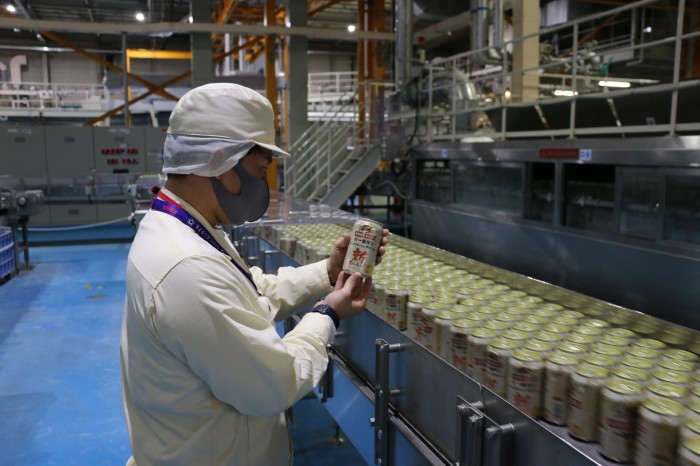
GT: Can you name any companies?
DC: Hot off the press: UBS published the first report at a very high level, including TCFD and TNFD reference. Kirin, the Japanese beverage company, did a full TNFD assessment looking at their exposure to water, in particular, in other parts of the world. Axa have also started to use TNFD. And many others too. So people are actually building it into their vocabulary and starting to get their head around how to think about it.
But my message to everyone is: there is a learning curve. Not every portfolio manager is an expert in nature. And we may not expect them all to be complete experts, but we would expect their organisations to understand how to think about ecosystem services and nature-related risk.
It does take time to build up that knowledge and I think our encouragement is for everyone not to wait, and to start now — because it will take a couple of years to build that. Nestlé, one of our task force members, has built a data set that understands every location of their operation. Now you’d kind of expect that every company would know that, but you’d be surprised. One of the things about nature is that — unlike climate — you have to know where you’re operating, to a pretty precise location. And not every company knows that. They have a legal entity database that says: “My legal entity is in the UK”, whether it is in Scotland or Wales or London. So you have to get that knowledge and that data set, too. A lot of learnings from this can be built into the approach.
GT: I guess the message really is that, for corporate boards and investment groups, it’s time to get familiar with the value of these worms, the soil, water, and everything else. Particularly water, because that often has the most immediate impact on corporate activities.
The above transcript has been edited for brevity and clarity
Climate Capital

Where climate change meets business, markets and politics. Explore the FT’s coverage here.
Are you curious about the FT’s environmental sustainability commitments? Find out more about our science-based targets here
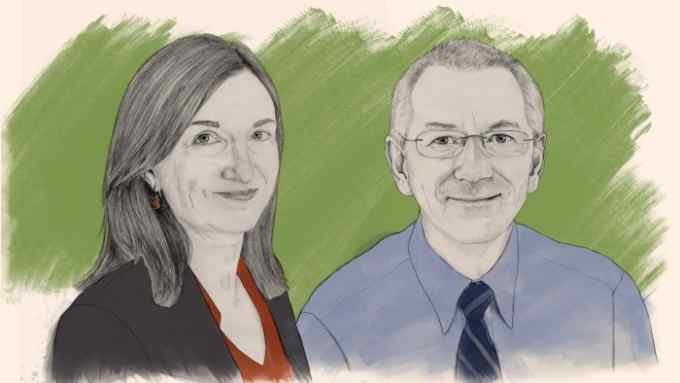
Comments